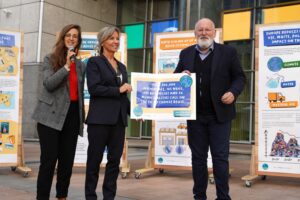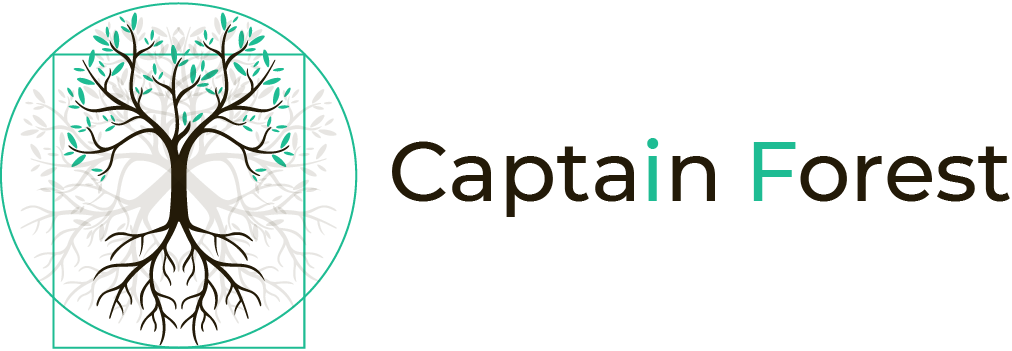EU revision of the Packaging and Packaging Waste Directive
#WeChooseReuse – a European led break free from plastic campaign – reiterateD its demands in the run up to the EU revision of the Packaging and Packaging Waste Directive in october 2022
Single-use packaging (including plastic, aluminum, or paper) is contributing to the triple climate, biodiversity, and pollution crisis. In 2018, the level of packaging used in Europe reached new heights, with a record of 174kg of packaging waste per person (1).
To enforce and strengthen current EU policies, the European Commission is reviewing the Packaging and Packaging Waste Directive (PPWD) to improve the design for reuse and promote high-quality recycling, and after months of delay, #WeChooseReuse is expecting the review to be finalised in November 2022.
#WeChooseReuse and its signatories have been calling for this review to set strong and ambitious legislation for packaging and packaging waste. This directive has a unique opportunity to address:
- How the European Green Deal and the new circular economy action plan can ensure that “all packaging on the EU market is reusable or recyclable in an economically viable way by 2030”.
- How the PPWD can contribute to the 2018 European Strategy for Plastics objective, in which the Commission committed to ensuring that “by 2030 all plastics packaging placed on the market can be reused or recycled cost-effectively”. (2)

As #WeChooseReuse looks towards this revision, they reached a major milestone of the campaign: on the 12th October 2022, signatures of the campaign were handed over to EVP Frans Timmermans and MEP Frédérique Ries who expressed support for ambitious legislation on reuse in the run up to the revision of the PPWD.
Why revise the PPWD?
Facing increasing pressure to reduce the environmental impacts of packaging, in 2020 the European new Circular Economy Action Plan and the European Green Deal called to adopt a more circular approach to the way in which packaging is created and managed.
By revising the existing PPWD, the European Commission can step up its legislation around packaging and packaging waste and contribute to ensuring that by “2030, all packaging placed on the market in the EU is reusable or recyclable in an economically viable manner”. (3)
As the #WeChooseReuse campaign has shown, NGOs, businesses and municipalities across Europe are beginning to focus on reusability of packaging.
The fact that the current PPWD includes recycling targets only, sustains Europe’s continual prioritisation of recycling, rather than reducing the production of single-use packaging, and stands in the way of switching the focus to upstream measures. Setting reuse targets in the PPWD is one of the key tools the EU can and should use to make reusable packaging the new norm. (4)
#WeChooseReuse makes the case for scaling up reusable packaging in Europe
Almost all sectors depend on single-use packaging (SUP), with plastic as a primary packaging material and this is leading to a record level of resource use and packaging waste.
An alternative is possible with reuse systems: products and packaging are conceived, designed, and placed on the market to accomplish multiple trips or rotations within their lifespan. They can be returned to a producer and reused for the same purpose by another user.
Based on a study led by Circular Economy Europe, #WeChooseReuse prioritized three sectors where reuse is expected to have the most potential: takeaway food containers and cups; mailing packaging for clothing and accessories bought online; and household care products (detergents) bought in supermarkets.
In the three identified sectors, the comparative analysis between reuse systems and single-use packaging, demonstrated savings and a decrease of the environmental footprint:
Sector 1: HoReCa Food & Beverages (4)
This sector is rapidly growing and has a considerable environmental impact. In the EU, the annual use of takeaway containers was estimated to exceed 19 billion and 33 billion units for food and beverage containers in 2019. Moreover, food and beverage containers feature on the top ten list of single-use plastics most commonly found on European beaches.
The results of the study showed that compared to typical single-use packaging, reusable takeaway boxes and cups have 13 times and 4 times lower environmental footprint.
Scaling up reuse in this sector by 20% by 2027 and 50% by 2030 delivered combined savings for beverages and food containers of:

Sector 2: E-commerce (4)
This sector has been growing in recent years, and COVID-19 accelerated the adoption of online retail across European countries, tripling the annual e-commerce growth rate and in line with long-term trends.
The results of the study showed that compared to typical single-use packaging, reusable e-commerce packaging has nearly 3 times less impact in the e-commerce fashion category.
Scaling up reuse for the e-commerce sector by 20% by 2027 and 50% by 2030 delivered savings of:

Sector 3: The household care (4)
The market for household care (laundry care, surface care, dishwashing, maintenance products, and bleaches) represented 19.5 billion packaging units in Europe in 2019. These products are sold primarily on plastic bottles of varying sizes. The most common types are HDPE and PET15.
The results of the study showed that compared to a typical single-use bottle, the reusable packaging system for households has nearly 12 times less impact than a single-use system.
Scaling up reuse for the household care sector by 20% by 2027 and 50% by 2030 delivered savings of:

Policy brief for the PPWD revision
The study showed how scaled-up reuse systems in the three prioritized sectors could contribute to circular economy objectives, which can only be achieved with incentives, a clear legal framework, and standards.
Standardization of reusable packaging will play a key role in scaling up reuse. Such standards should guide businesses in complying with regulatory requirements by providing harmonized packaging formats and reuse system requirements which, if applied, allow companies to comply with the law. Standards are also expected to reduce business uncertainty by limiting packaging and infrastructure diversity, thus providing clear framework conditions for investors and operators to develop interoperable, reusable packaging systems without stifling innovation and product differentiation.
To achieve the circular economy objectives in Europe, 2030, #WeChooseReuse formulated policy demands at the national and EU level (5), including effective reuse targets for packaging and products, together with an overall reduction target for packaging.
- HoReCa targets:
- 100% target for eat-in food and beverages
- 75% target for takeaway and delivery food and beverage
- E-commerce targets:
- 50% target for clothing and accessories shipped within the EU
- 50% target for all other goods shipped within the EU
- Grocery targets:
- 75% target for household cleaning products
- 75% beverages (soft drinks & alcoholic)
- 50% cosmetics (shampoo, soaps, etc.)
#WeChooseReuse collected 100,877 signatures from individuals, 165 from NGOs, 296 from businesses, and 34 from municipalities, supporting policy recommendations for revising the EU’s PPWD. Setting a clear framework for a scalable reuse system in Europe is not only in alignment with the EU circular economy agenda but will also have tremendous environmental benefits, including reducing plastic waste, using resources efficiently, and decreasing emissions.
Will the EU hear this call for ambitious reuse policies? #WeChooseReuse and its signatories are looking towards November 2022 to find out!
To read more about #WeChooseReuse campaign click here.




